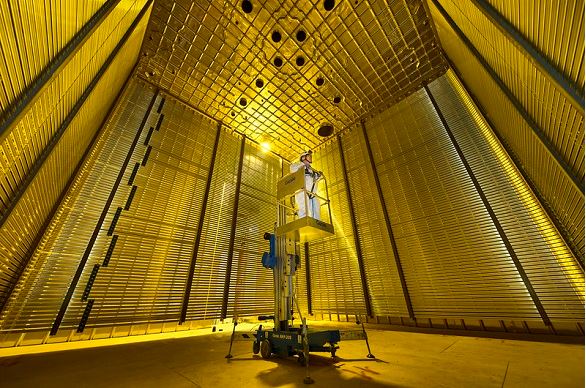Physicists from the University of Liverpool are helping to build critical equipment for the flagship DUNE global scientific project.
Fermilab, part of the US Department of Energy, hosts DUNE (the Deep Underground Neutrino Experiment). The UK government has put £65 million towards the DUNE experiment, which will investigate elusive neutrinos in order to improve our knowledge of the universe’s origin and structure.
The Science and Technology Facilities Council’s Daresbury Laboratory, based in Sci-Tech Daresbury in the Liverpool City Region, is delivering a number of critical detector components as part of this project.
Professor Christos Touramanis oversees a collaboration of 22 UK and US institutes that will provide Anode Plane Assemblies (APAs) to the experiment, and physicists from the University of Liverpool are playing a crucial role in this.
Assemblies of anode planes
The neutrinos will be captured in detectors that hold 17,000 tons of liquid argon.
Anode Plane Assemblies (APAs) — enormous rectangular planes coated with millions of copper-beryllium wires around the diameter of a human hair – will read out the small electrical signals of neutrino interactions.
Each APA is 2.3m by 6.3m in size, making them the largest individual components for DUNE, and they must be manufactured to millimetre accuracy.
Daresbury Laboratory will manufacture 150 APAs for DUNE with the help of its academic partners, including the University of Liverpool.
To fulfill this demand, a huge purpose-designed APA factory was established in Daresbury inside a disused accelerator hall, with 20 positions created just for this purpose.
Making fantastic progress
The Daresbury team is currently working on the first APA for ProtoDUNE-II.
Before the whole set of APAs for DUNE is produced, the high-precision APAs will undergo cryogenic testing in the ProtoDUNE-II detector at CERN, a procedure that will take many years.
The project’s scientific leadership is provided by physicists from the Universities of Liverpool and Manchester.
“The launch of APA production at Daresbury is a remarkable success after a year of COVID-19 lockdowns and other disruptions,” stated Professor Christos Touramanis. It is a victory for the University of Liverpool neutrino group, as some of our scientists and engineers are in charge of design, procurement, and quality assurance, with a special emphasis on metrology. The Department of Physics’ mechanical workshop created the high-precision active wire control and recording head that is utilized to construct these big, accurate instruments. We’re all ecstatic, and we’re looking forward to the world-class science these equipment will produce.”
“It is amazing that the project team continues to make good progress in such a tough year,” stated STFC Executive Chair Professor Mark Thomson. As a result of this progress, 2021 is expected to be the year of the Final Design Review and the start of ‘mass’ manufacturing of APAs at Daresbury — a significant milestone for everybody involved and a significant step toward the building of this tremendously exciting neutrino experiment.
“I am really proud of the Daresbury team for continuing to work so hard in the face of adversity.”
“These detector components will play a vital role in unraveling the enigma of neutrinos and their involvement in the creation of the Universe,” stated DUNE spokesman Professor Stefan Soldner-Rembold of the University of Manchester.
“The worldwide team of neutrino physicists working on DUNE is thrilled to receive the first of the huge detector components developed by the UK – the largest non-US donor to this global experiment,” Professor Soldner-Rembold said.
The STFC and 14 universities in the UK are involved in the DUNE collaboration: Birmingham, Bristol, Cambridge, Durham, Edinburgh, Imperial, Lancaster, Liverpool, UCL, Manchester, Oxford, Sheffield, Sussex, and Warwick.


